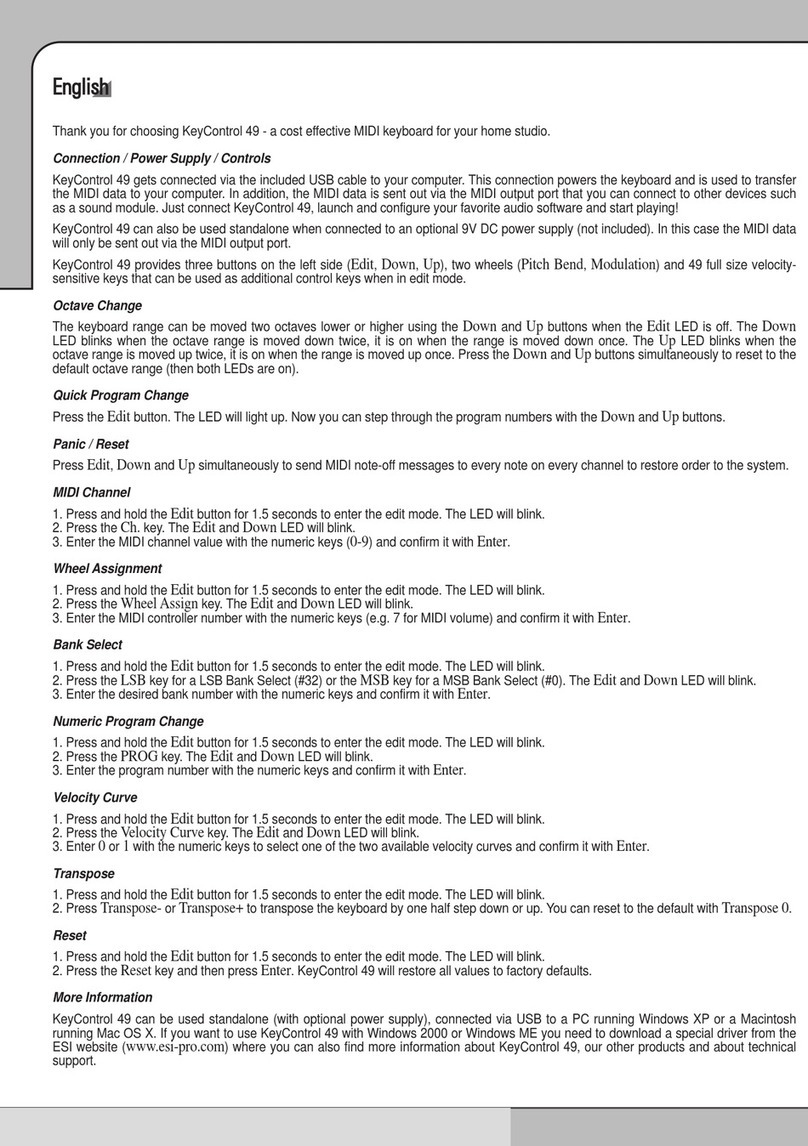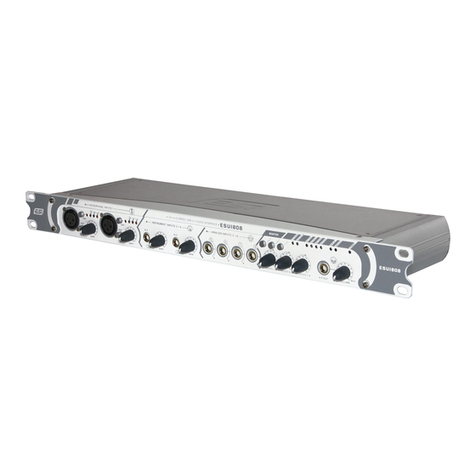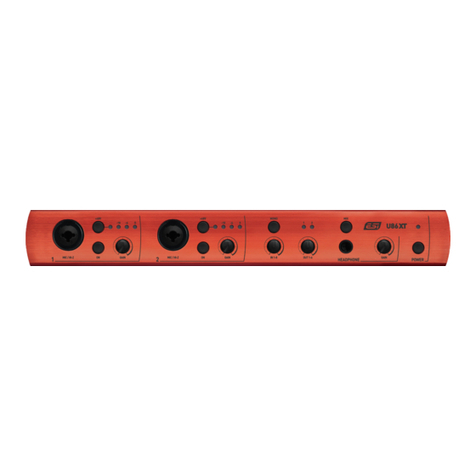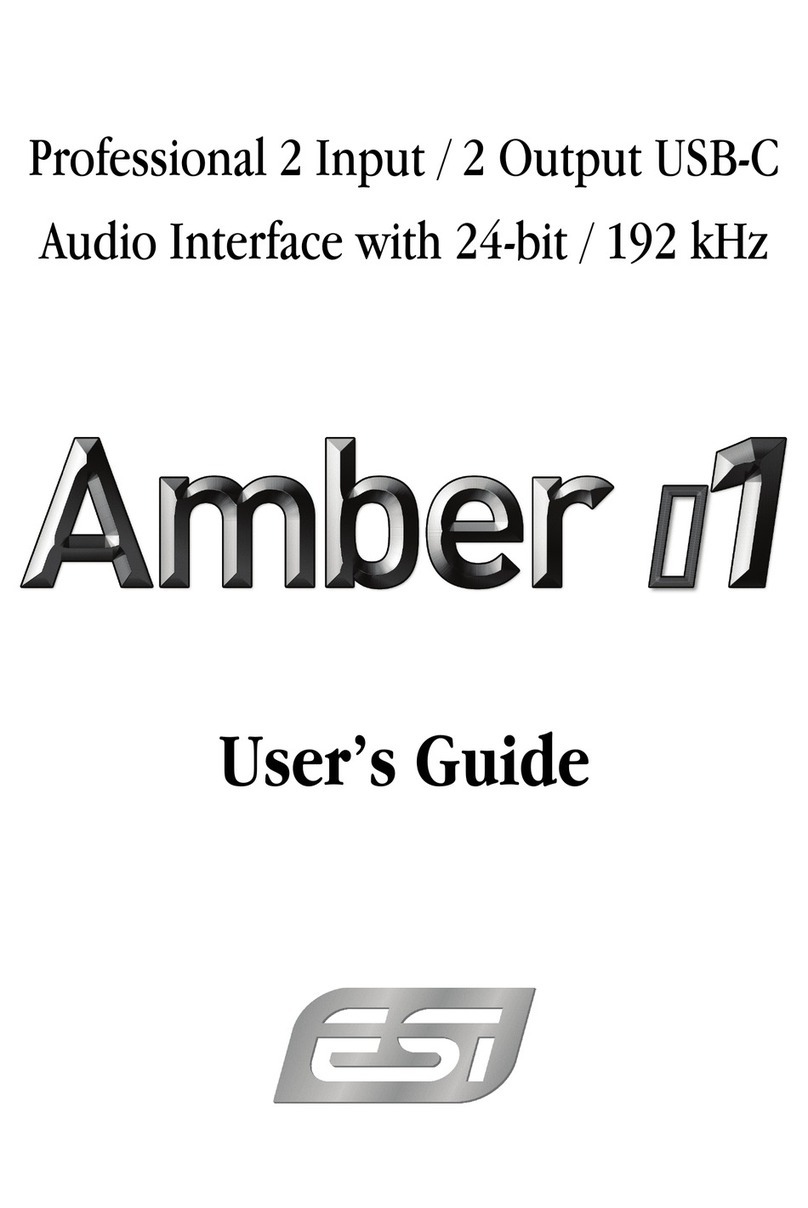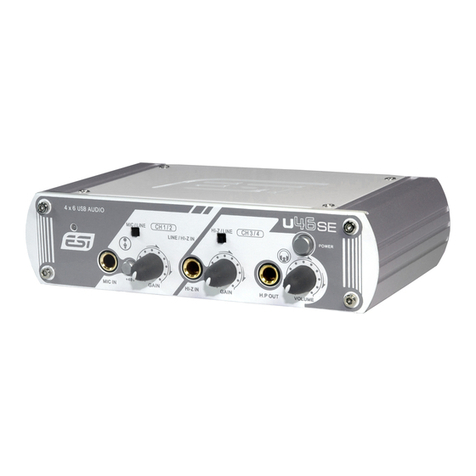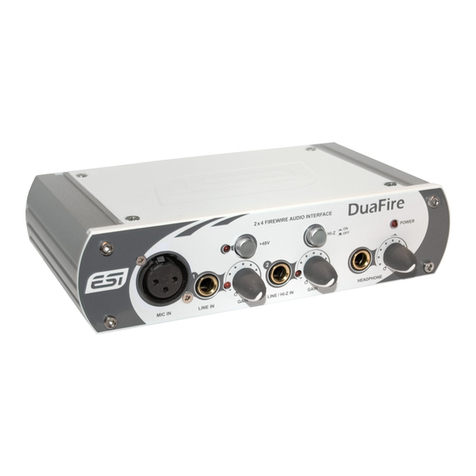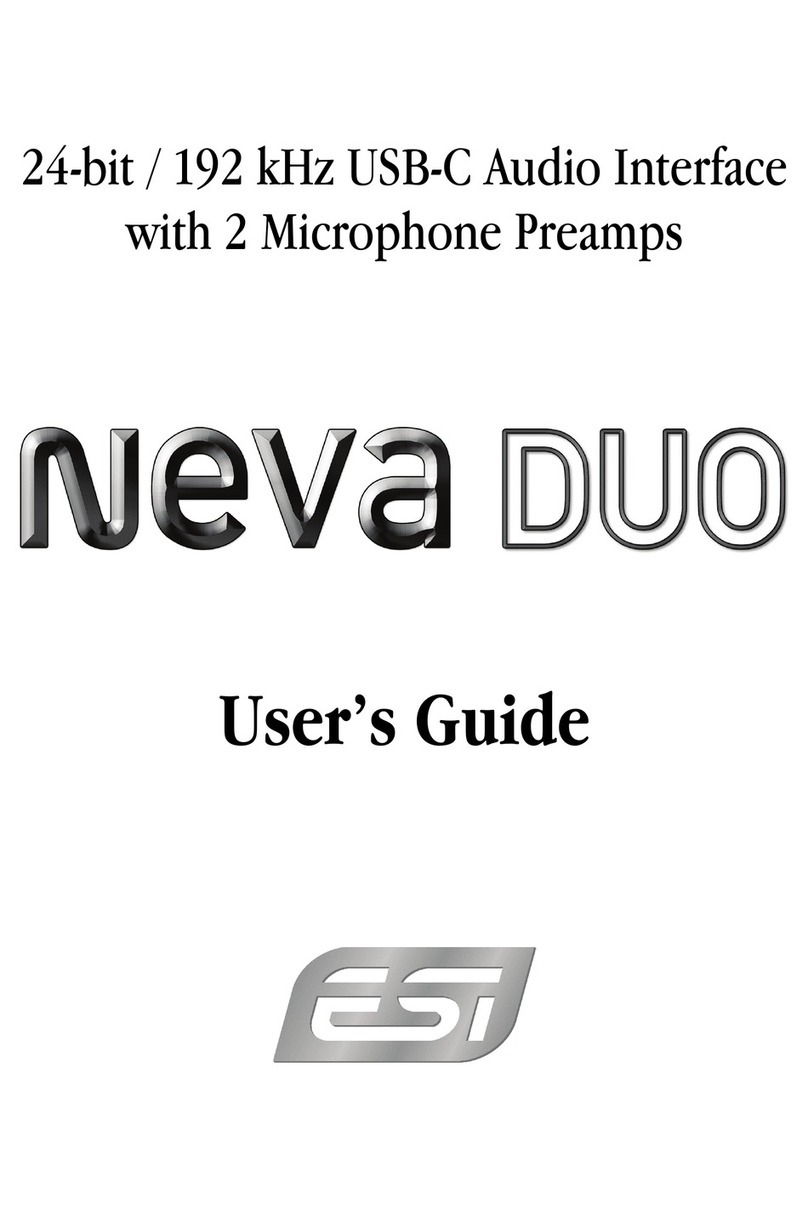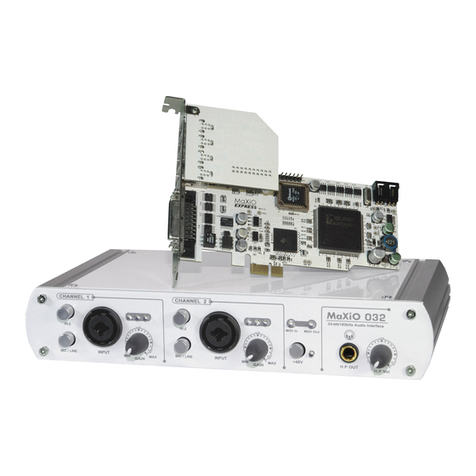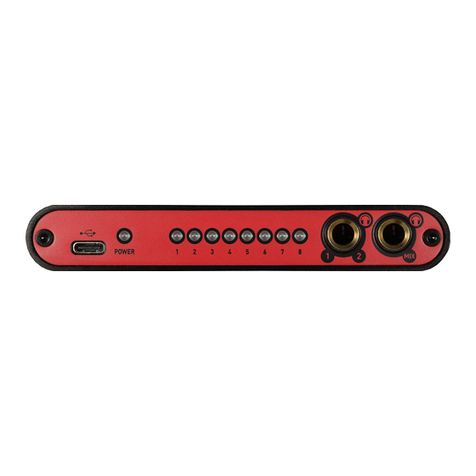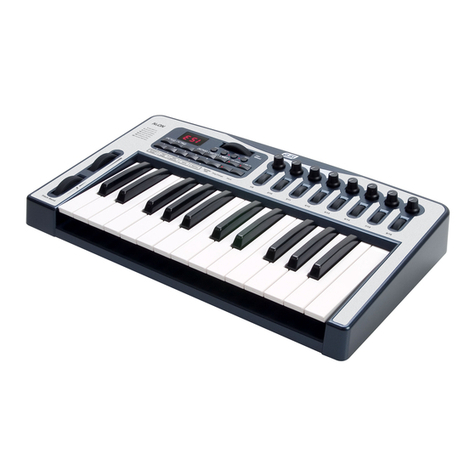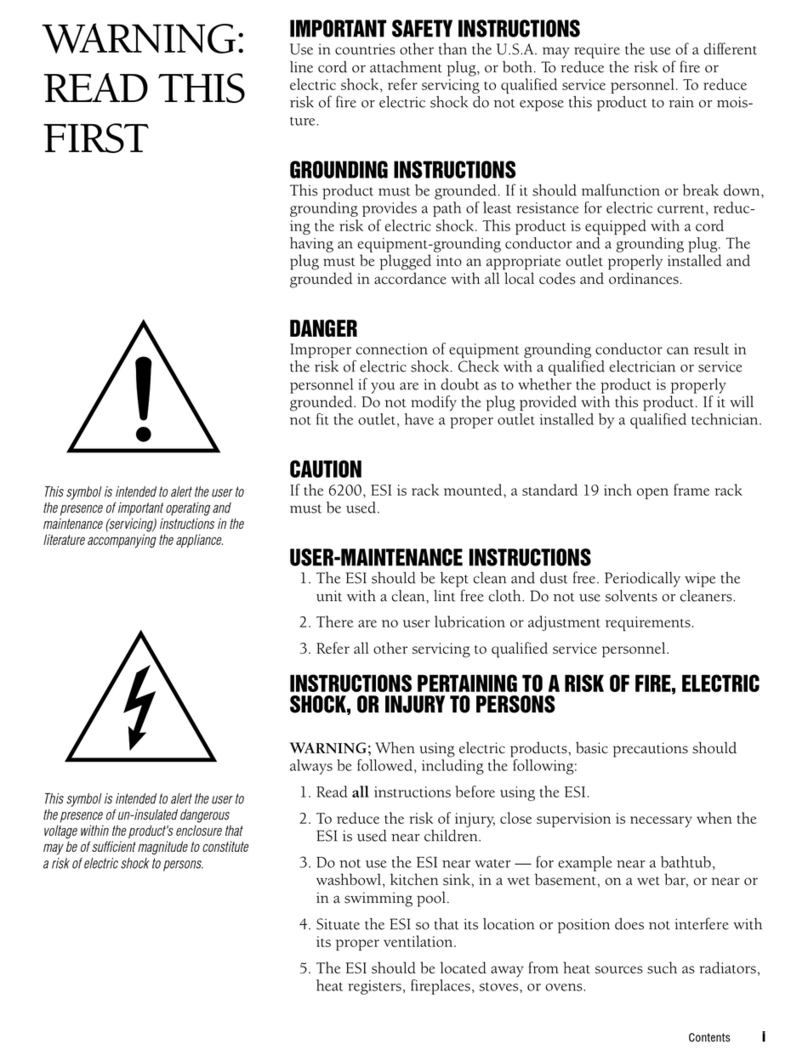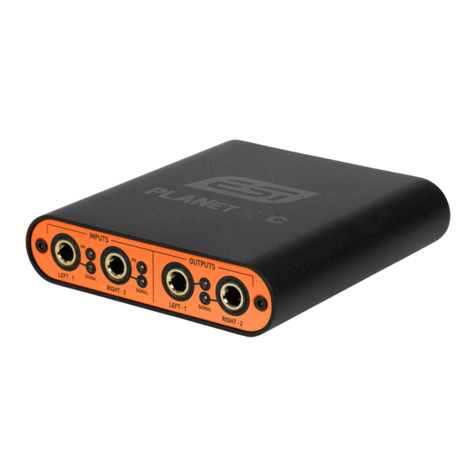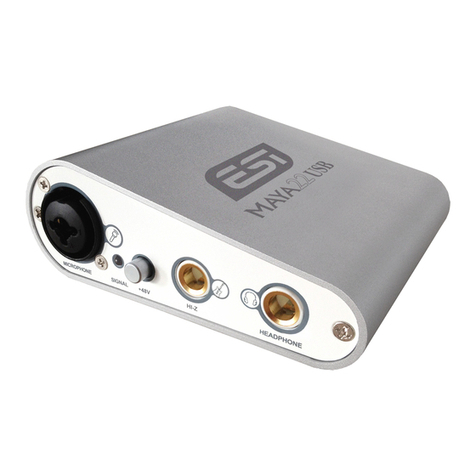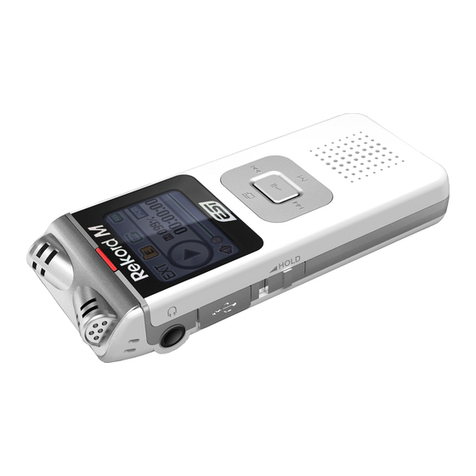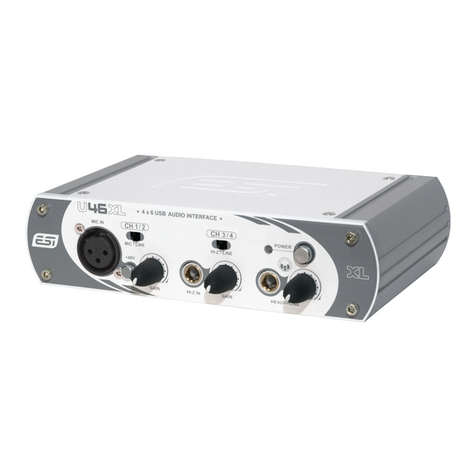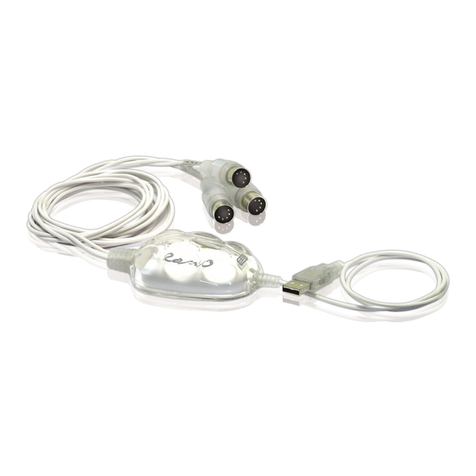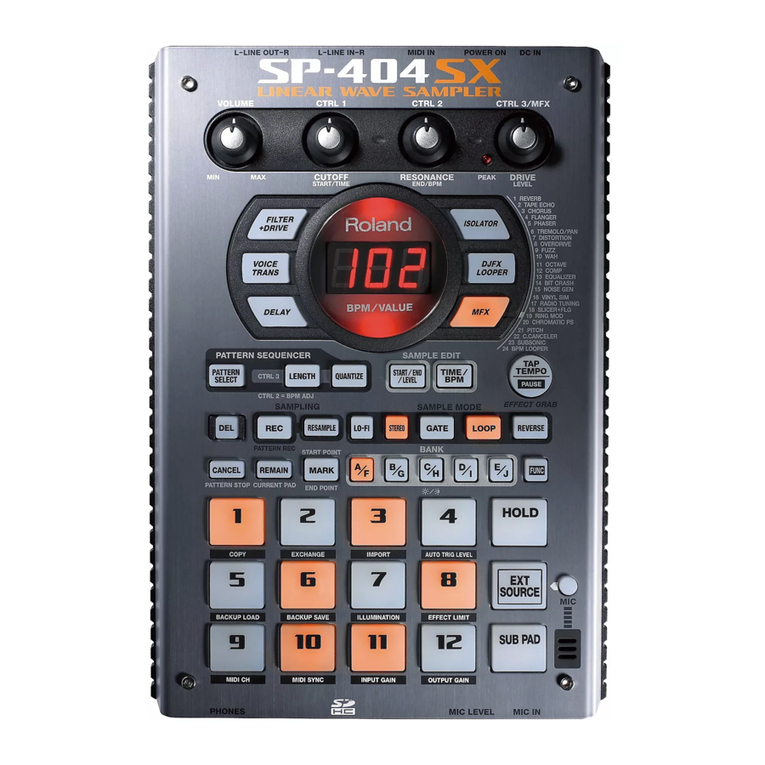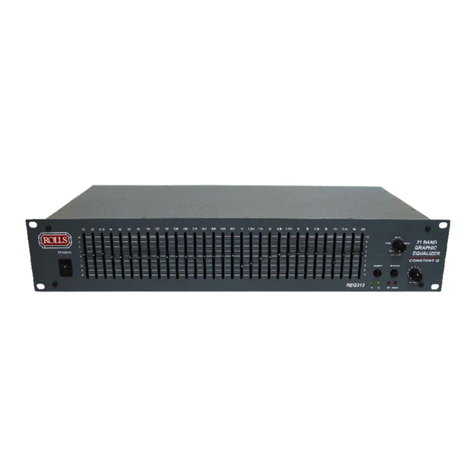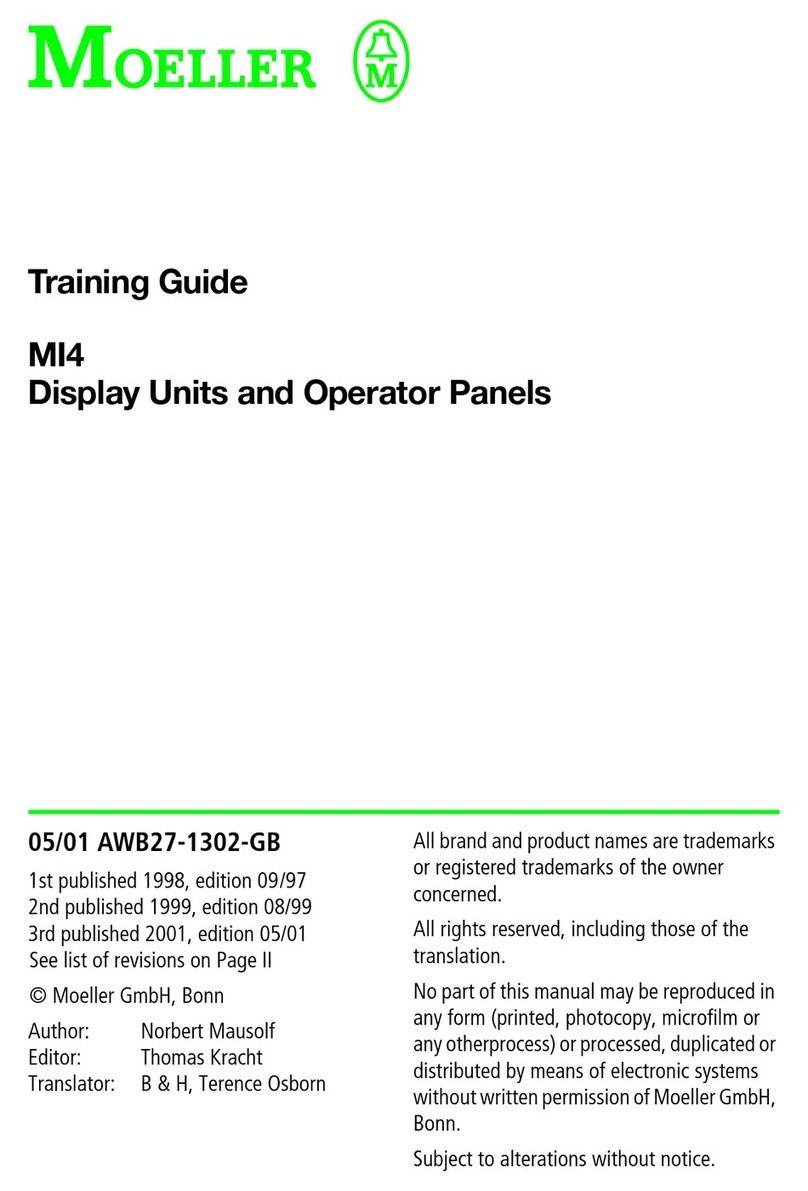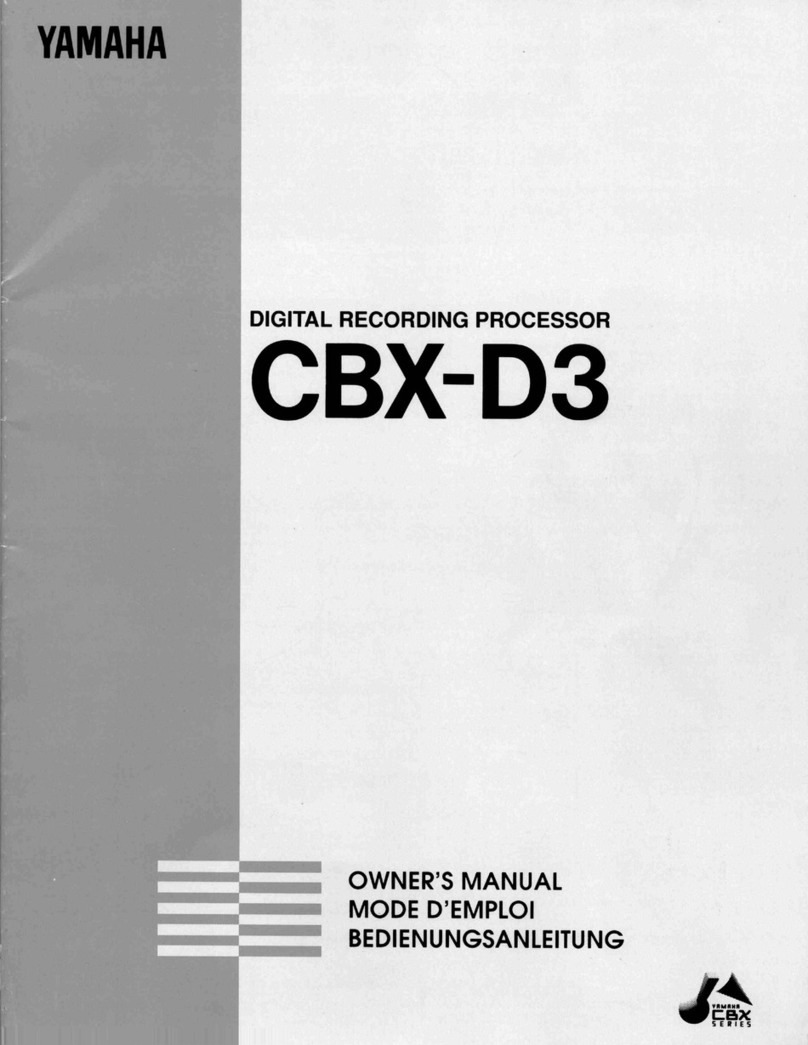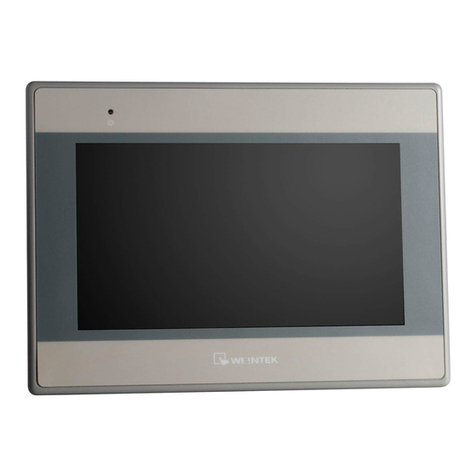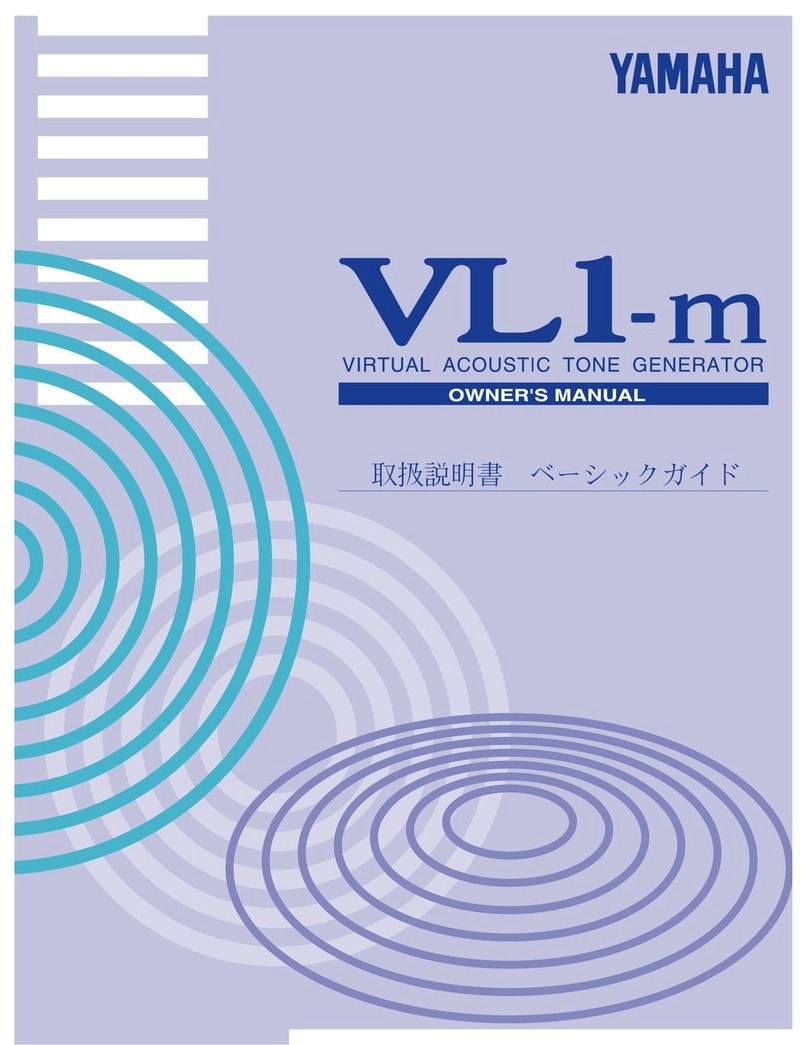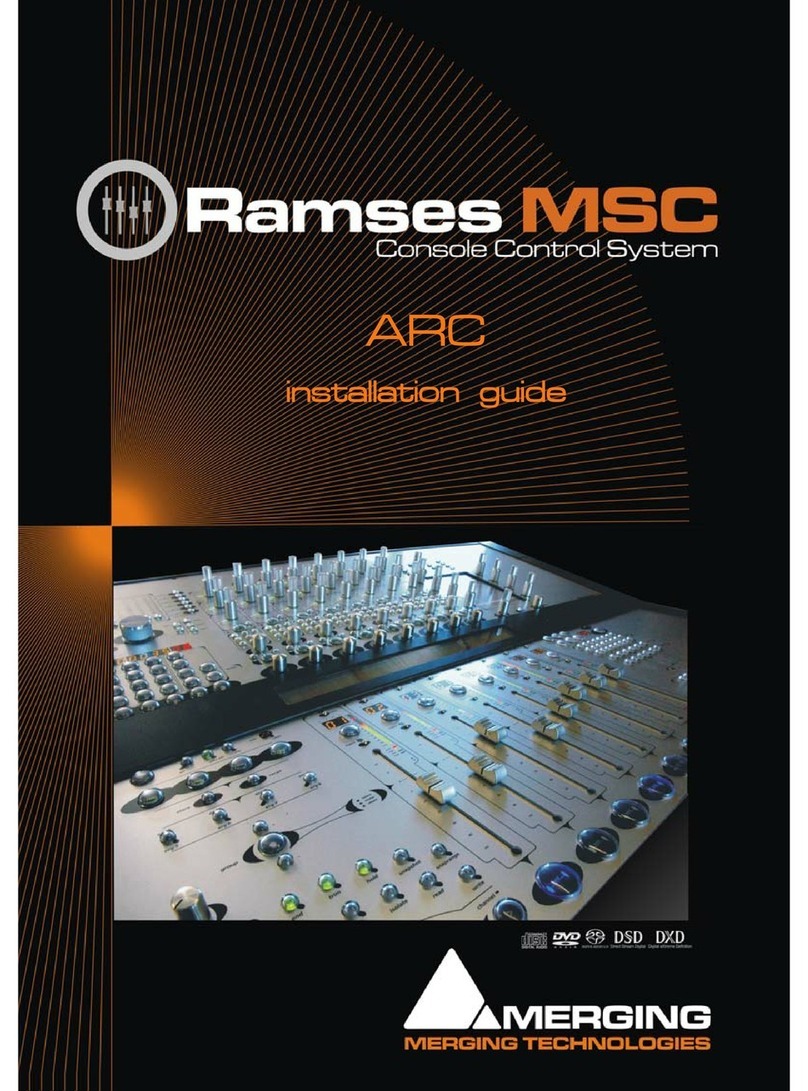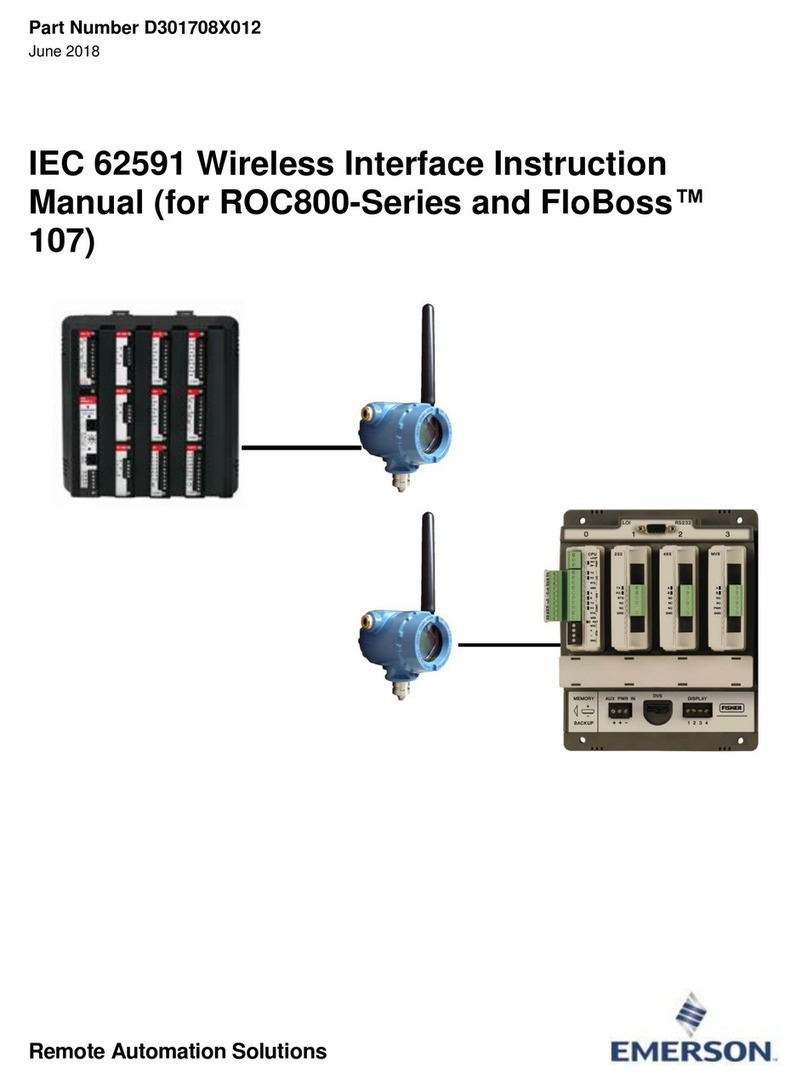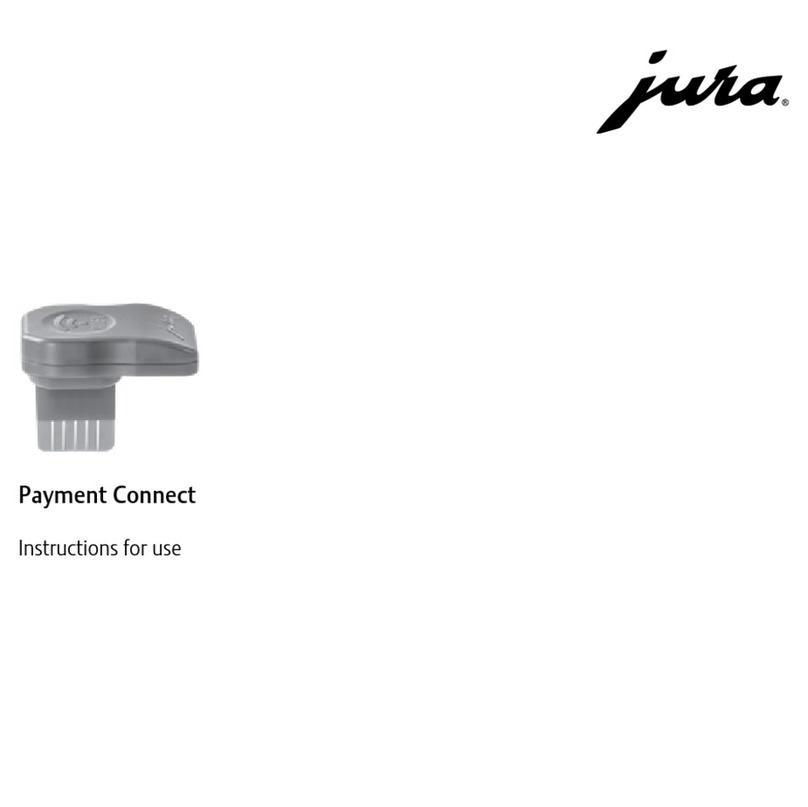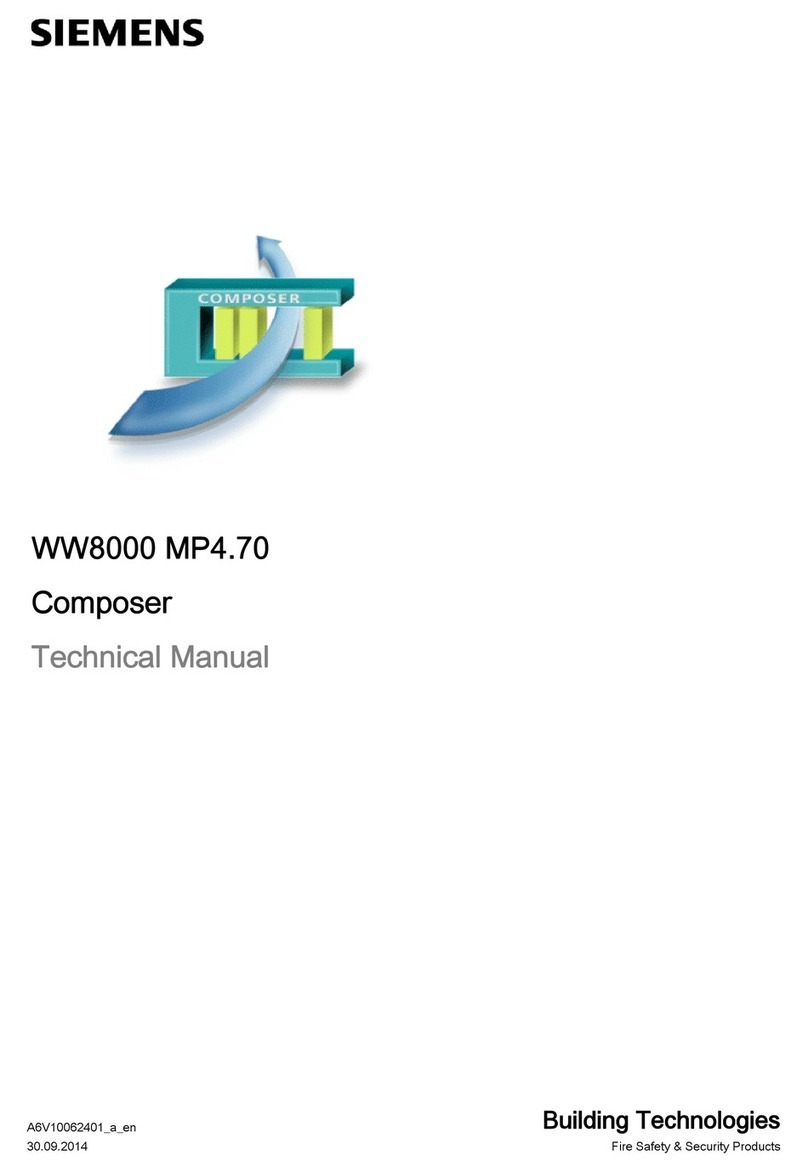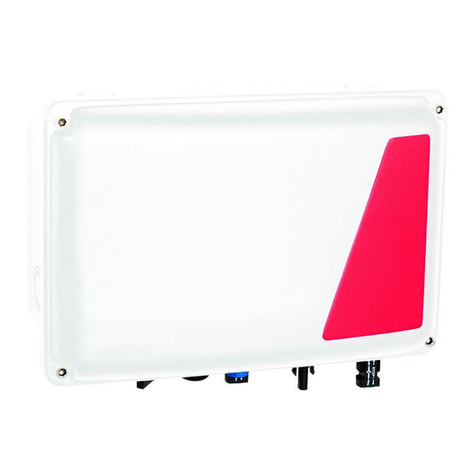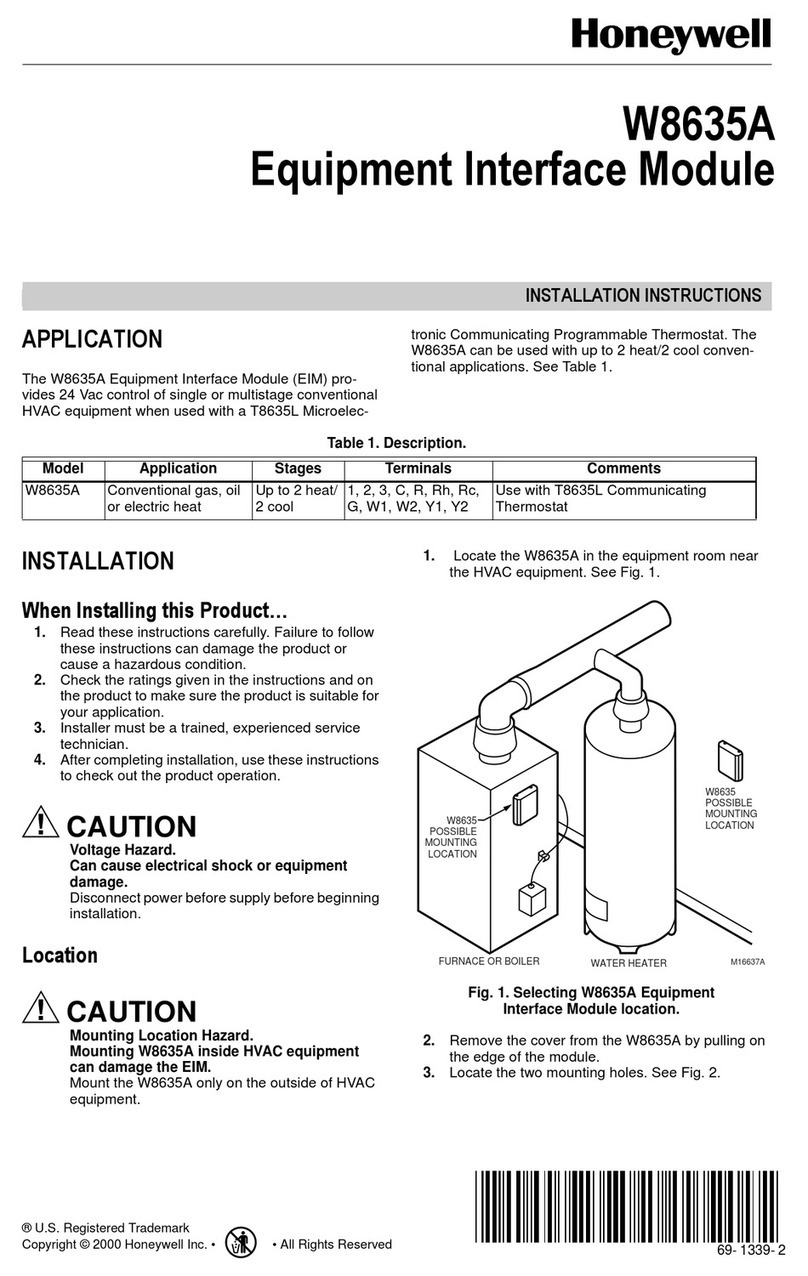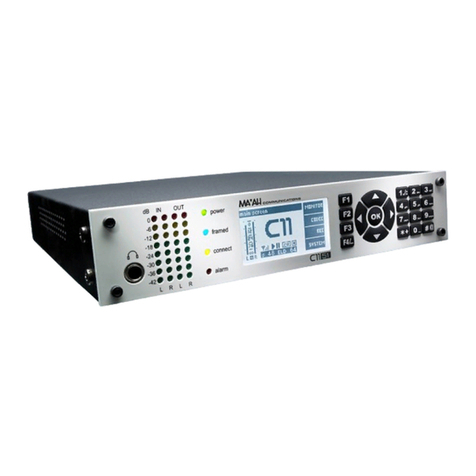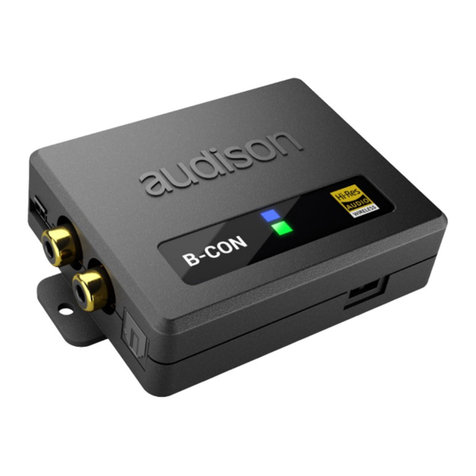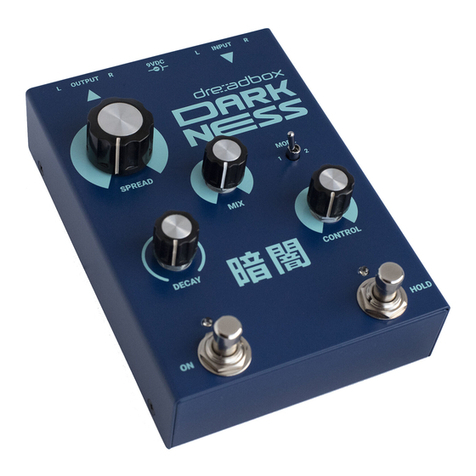ESI Miditerminal M4U User manual

WARRANTY
Ego Systems Inc. warrants the return policy to its original purchaser as follows; All the EGO
SYSTEMS INC.’s products, under normal use, will be free from faulty as long as the purchaser
owns this product.
The terms of warranty is 15 months to EGO SYSTEMS INC. distributors considering a 3-month
temporary stock period ahead of being sold to the end user.
Therefore, the actual terms of warranty is 12 months to the end user.
EGO SYSTEMS INC. will, at its sole option, repair or replace a product, which is found to be defective.
This warranty shall be invalid if, in the sole opinion of EGO SYSTEMS INC., a product failure is the
result of misuse, abuse, modification, or misapplication. Except as expressly provided above, EGO
SYSTEMS INC. products are provided, 'as is' without any kind of warranty. No claim is made for
merchantability or fitness for any purpose. In no event will EGO SYSTEMS INC. be liable for any direct,
indirect, consequential, or incidental damages arising out of use of the product.
The purchaser must contact EGO SYSTEMS INC. or its regional representative to receive prior
approval before returning a faulty unit.
To obtain warranty service, the buyer or his authorized dealer must send the email to
then issue an authorization number.
All such returns must be shipped to EGO SYSTEMS INC.' headquarters in Seoul, Korea as being
packaged in the original or equivalent protective packaging material (Rack, PCI card, Power Cables,
connection cables), with freight prepaid and adequate insurance.
Any Shipments without freight prepaid will not be accepted.
If the returned product is deemed to be defective, the repaired or replacement product will be back
to you at no extra charge via the carrier chosen by EGO SYSTEMS INC.
TRADEMARKS
ESI, Miditerminal M4U, M4U are trademarks of EGO SYStems Inc. IBM is a registered trademark of
International Business Machines Corporation. Windows is a trademark of Microsoft Corporation. Other
product and brand names are trademarks or registered trademarks of their respective companies.
RADIO FREQUENCY INTERFERENCE AND COMPATIBILITY
NOTE: This equipment has been tested and found to comply with the limits for EN55022
ClassA:1998+A1:2001, EN55024:1998 of CE Test Specifications.

ESI Miditerminal M4U
2
This equipment generates, uses, and can radiate radio frequency energy. If not installed and used in
accordance with the instruction, it may cause interference to radio communications. This device also
complies with part 15 class A of the FCC Rules Operation is subject to the following two conditions; This
device may not cause harmful interference, and must accept any interference received, including
interference that may cause undesired operation.
CORRESPONDENCE
For technical support inquiries, contact your nearest dealer or contact us directly. Direct all other
correspondence to:
EGO Systems Inc.
Suite 1003, Shinhan Bldg. 45-11 Yoido-dong
Youngdungpo-gu, Seoul, Korea
Tel: 82-2-780-4451
Fax: 82-2-7804454
Technical support (Korean language only)
: 82-2-711-6655
Ego Systems Inc. US. Office
3003N. First St., Suite 303,
San Jose, CA 95134, USA
Website: www.esi-pro.com E-mail: sales@esi-pro.com
Tel: 1-408-519-5774
Fax: 1-408-519-5786
Technical Support (English only)

ESI Miditerminal M4U
3
INDEX
1. Introduction to Miditerminal M4U______________________________________ 4
2. Description of Miditerminal M4U ______________________________________ 5
3. System Requirement _________________________________________________ 8
1) PC ______________________________________________________________ 8
2) MAC____________________________________________________________ 8
4. Installation _________________________________________________________ 9
1) Hardware Installation _____________________________________________ 9
2) Driver Installation________________________________________________ 10
5. Setting in Applications_______________________________________________ 12
1) PC _____________________________________________________________ 12
Cubase SX_______________________________________________________ 12
Logic ___________________________________________________________ 13
Giga Studio ______________________________________________________ 14
Reason __________________________________________________________ 15
Sonar ___________________________________________________________ 15
2) MAC___________________________________________________________ 16
Cubase SX_______________________________________________________ 16
Nuendo _________________________________________________________ 18
Logic ___________________________________________________________ 19
Reason __________________________________________________________ 20
* The known Problems ________________________________________________ 21
All features and specifications subject to change without notice.
First Edition Oct. 2002

ESI Miditerminal M4U
4
1. Introduction to Miditerminal M4U
Thank you for choosing ESI Miditerminal M4U.
The M4U is a convenient 4 in 4 out, 64 channels USB MIDI Interface for PC and MAC
computer.
It is fully optimized with the Windows XP and MAC OS X.
With the M4U you can obtain perfect MIDI timing and effective audio performance at
an extremely affordable price.
USB makes installation of new peripherals much simpler, just plug and play.
You don’t have to open your computer to add peripherals any more, just plug and turn it
on. With USB-compliant computers and peripherals, there are no more worries about
IRQ setting, DIP switch setting, or card installation. Even the computer turned on, it is
no problem with attaching and removing devices.
Just plug and play!
Features
- 4 In 4 Out MIDI (64 MIDI channel)
- Perfect MIDI timing
- High-speed connection to USB-equipped PC or Apple computers
- MIDI-activity indicators for each port
- USB-powered; requires no external power supply
- Compatible True Plug-and-Play installation; requires no Device Driver, IRQ,
I/O Address or DMA channel setup
- Variable THRU function
- 1/3 Compact Rack size
- Optimized for Windows XP and MAC OS X

ESI Miditerminal M4U
5
2. Description of Miditerminal M4U
Front Panel
1 2 3 4 5 5 5 6
Rear Panel
6 6 6 5 7
1: USB/MIDI THRU switch
This is where you select USB mode or three kind of MIDI Thru mode.
1) USB mode: When you select this mode, M4U will be working as a basic MIDI
interface. It’s the Normal mode.
You can control MIDI in/ouput from your Sequencer application.
In addition, Power/THRU LED will become red color.
If you push the button again, you can go to the THRU mode.

ESI Miditerminal M4U
6
If you want go back to the Normal mode, always push to pull out the button.
2) THRU Mode 1: Input and Output ports will be matched by 1:1.
For example, MIDI data from Input 2 directly goes to Output 2.
All LED display will be turned on. After 2~3 seconds, LED will be turned off again.
Power/THRU LED will become green color.
3) THRU Mode 2: The MIDI data from Input 4 goes to Output 1~4.
LED Display Input 4 and Output 1~4 would be turned on.
After 2~3 seconds, Output 1~4 will turned off. ( Input 4 is remains to be turned on)
Output LED will be lit by signal.
Power/THRU LED will become green color.
4) THRU Mode 3: The MIDI data from Input 1 goes to Output 1~4.
LED Display Input 1 and Output 1~4 would be turned on.
After 2~3 seconds, Output 1~4 will be turned off.( Input 1 is remain to be turned
on)
Output LED will be light by signal.
In addition, Power/THRU LED will become green color.
* Three kinds of THRU modes are changed in sequence whenever the button is
pushed in.
Function LED signal display
Normal Basic MIDI interface
THRU 1 I/O port matching (1:1)
All LED display will be turned on
After 2~3 seconds, LED will be turn off again
Flickering according to the signal
THRU 2 In 4 -> All MIDI Outputs
In 4, Out 1~4 display will be turned on
After 2~3 seconds, Out 1~4 LED will be turn
off again (In 4 will be remains to be turned on)
Flickering according to the signal
THRU 3 In 1 -> All MIDI Outputs In 1, Out 1~4 display will be turned on
After 2~3 seconds, Out 1~4 LED will be turn
off again (In 1 will be remains to be turned on)
Flickering according to the signal

ESI Miditerminal M4U
7
2. Power/THRU LED display
* Caution: THRU Mode only works when your computer is turned on.
Even though Power/THRU LED display is lit, M4U isn’t worked when your
computer is turned off.
3. MIDI OUT LED display indicator
4. MIDI IN LED display indicator
5: MIDI IN 1, 2, 3, 4 ports
6: MIDI OUT 1, 2, 3, 4 ports
7. USB connector

ESI Miditerminal M4U
8
3. System Requirement
1) PC
Windows XP operating system only
Intel Pentium III CPU or equivalent AMD CPU
Motherboard with Intel series chipsets or VIA chipsets
UDMA66/100 7200rpm hard disk drive
More than 256MB of RAM
(Highly depends on the system requirements of your audio software)
2) MAC
MAC OS 10.1 or later only
Macintosh with G3 or better processor (except the original PowerBook G3)
One available USB port
More than 256MB of RAM
(Highly depends on the system requirements of your audio software)
* Caution
1. We don’t recommend using many USB devices with the M4U via USB hub at the
same time. It may cause Input data lose.
2. Some old mainboard that using OHCI (open host controller interface) may
cause problem.
3. Check our web site http://www.esi-pro.com occasionally for the most recent
update information or technical issues.

ESI Miditerminal M4U
9
4. Installation
1) Hardware Installation
Before you begin, make sure you have read your computer’s manual on installing USB
devices. Your computer’s manual should describe the precautions you should take.
Shutting down computer wouldn’t need for installing an USB device to the computer.
However, we will take it from the start to make sure you can follow every detail of
installation.
1. Find the USB port on your computer. USB port is looked like below. You can find it
by the PS/2 or serial ports on the back of desktop computer system.
USB port on computer
2. Plug in appropriate plug of USB cable (called Series A plug) to the USB port of
computer. You will notice that USB ports on computer and M4U are different.
Series A plug
3. Connect the other end of the USB cable (Series B plug) to the USB port of M4U.
Series B plug
Turn on the computer. You will see the LED displays of M4U are lit. The M4U get the
power from the computer via USB cable so you don’t need to attach any external power
supplier.

ESI Miditerminal M4U
10
Series A Plug is used for those devices on which the external cable is permanently
attached like Mouse, Keyboard and USB hub etc…
Series B Plug is for that requires detachable external cables and used for devices
like Printers, Scanners, Modems, Stand alone Hubs.
2) Driver Installation
After Hardware installation is done properly, your PC or MAC computer will
automatically detect the M4U and install default driver.
You don’t need install additional driver.
In XP, go to Device Manager and check ‘USB Audio Device’ under Sound, video
and game controllers. Double click this device and check ‘ESI-M4U’ under USB
audio device properties.

ESI Miditerminal M4U
11
In Mac OS X 10.2 (Jaguar) or later, you can check if your M4U is recognized
properly by using Audio MIDI Setup application in Applications/Utilities folder.
Launch the Audio MIDI Setup application and click the MIDI Devices tab on the
Audio MIDI Setup window. If the M4U is recognized properly, the ESI-M4U icon
will be appeared on the window.

ESI Miditerminal M4U
12
5. Setting in Applications
* This chapter only contains the basic setup for some of the software. For more
detailed info, please refer to the manual of the software.
1) PC
Cubase SX
In Cubase, set input and output as USB Audio Device.
See red circle of below picture.

ESI Miditerminal M4U
13
Logic
In Logic, you can choose a port for a MIDI track in the instrument parameter box in
Arrange Window.
In addition, go to ‘Synchronisation’ -> ‘MIDI’ and uncheck ‘Transmit MIDI clock’ for
better performance.

ESI Miditerminal M4U
14
Giga Studio
After launching GigaStudio, set input and output as USB Audio Device.
See red circle of below picture.

ESI Miditerminal M4U
15
Reason
Go to Edit -> Preference -> MIDI
And Set USB Audio Device
Sonar
After launching Sonar, Go to Option -> MIDI devices setting and Select USB Audio
Device.

ESI Miditerminal M4U
16
2) MAC
As long as the M4U is recognized by Mac OS X with no problem, all the applications
that support CoreMIDI should work fine with the M4U. Here are some examples of
how to change application settings for using the M4U.
Cubase SX
In Cubase, expand the MIDI section in the Inspector by clicking its tab.

ESI Miditerminal M4U
17
In this section, you can choose a port (or all ports) for MIDI input.
In addition, you can choose a port for MIDI output.

ESI Miditerminal M4U
18
Nuendo
In Nuendo, you can choose a port for a MIDI track in the Track List area.

ESI Miditerminal M4U
19
Logic
In Logic, you can choose a port for a MIDI track in the instrument parameter box in
Arrange Window.

ESI Miditerminal M4U
20
Reason
In Reason, open the Preferences window and you can choose a port for MIDI input in
the MIDI Page.
Other manuals for Miditerminal M4U
1
Table of contents
Other ESI Recording Equipment manuals



